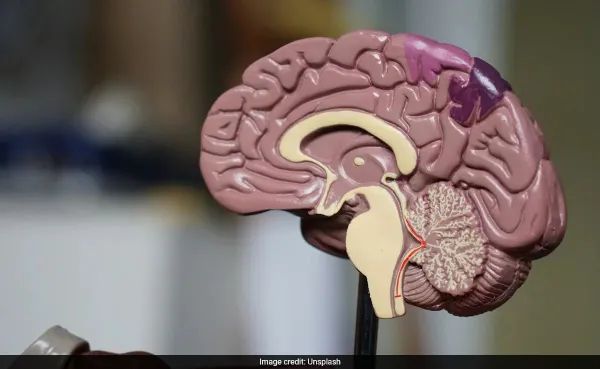
“श्री राधे राधे नमोऽस्तुते, हृदयेश्वरी श्रीकृष्णप्रिये।”
Fifteen days after Janmashtami, when the entire land echoes with songs of Krishna’s birth and leelas, a more subtle yet equally profound celebration takes place Radhashtami. This day marks the birth of Goddess Radha, the eternal companion of Krishna and the supreme devotee whose love for the Lord has inspired countless generations. Unlike Krishna’s playful exploits celebrated during Janmashtami, Radhashtami reminds us of the devotee’s journey—the path of pure, selfless devotion that completes the divine story.
Radha was born in the village of Barsana, to Vrishabhanu and Kirtida, under the blessing of the divine. From a young age, she was drawn to Krishna’s presence, not merely by fascination but by an innate spiritual connection. Legends say that even as a child, Radha displayed extraordinary compassion, wisdom, and devotion. Her life became a living example of bhakti, showing that love for the divine is not about rituals alone but about the heart’s surrender and unwavering faith.
Over time, Radha became the symbol of devotion that transcends worldly attachments. Her love for Krishna is celebrated as the purest form of spiritual longing, where the devotee’s soul seeks union with the divine. Every Radhashtami reminds devotees that the journey of bhakti is complete only when the heart aligns with such love, patience, and surrender.
1. The Fifteen-Day Gap and Its Symbolism
 This is the foundation of Bhagavad Gita’s karma yoga—do your karma (your love), but don’t attach yourself to the result. The fifteen-day gap between Janmashtami and Radhashtami is not random. Krishna’s birth signifies the arrival of the divine in the world, but Radha’s birth marks the arrival of the devotee’s heart ready to respond to that divine presence. The gap reflects a spiritual rhythm-the world witnesses God first and then learns how to connect with Him through devotion.
This is the foundation of Bhagavad Gita’s karma yoga—do your karma (your love), but don’t attach yourself to the result. The fifteen-day gap between Janmashtami and Radhashtami is not random. Krishna’s birth signifies the arrival of the divine in the world, but Radha’s birth marks the arrival of the devotee’s heart ready to respond to that divine presence. The gap reflects a spiritual rhythm-the world witnesses God first and then learns how to connect with Him through devotion.
2. The Divine Birth of Radha
 Radha was born in Barsana to Vrishabhanu and Kirtida under divine blessings. Legends say her very presence radiated compassion, purity, and devotion. While Krishna embodies divine play, Radha embodies the principle of devotion itself. Her birth teaches that love for God is the ultimate path to spiritual fulfillment.
Radha was born in Barsana to Vrishabhanu and Kirtida under divine blessings. Legends say her very presence radiated compassion, purity, and devotion. While Krishna embodies divine play, Radha embodies the principle of devotion itself. Her birth teaches that love for God is the ultimate path to spiritual fulfillment.
3. Celebrating Her ArrivalRadhashtami is celebrated with rituals that focus on inner devotion rather than spectacle. In Barsana and Vrindavan, temples are decorated, idols bathed and adorned, and devotees chant Radha Krishna mantras. Bhajans and kirtans fill the air, narrating stories of Radha’s life and her unwavering love for Krishna, helping devotees connect to her energy.
4. Fasting as a Spiritual Practice
 ekadashi fasting for women Many devotees fast from sunrise to moonrise, consuming only fruits, milk, or light vegetarian food. This fasting is not just physical; it is a symbolic practice of self-discipline and focus. By mirroring Radha’s dedication, devotees purify their hearts and minds, making space for deeper devotion.
ekadashi fasting for women Many devotees fast from sunrise to moonrise, consuming only fruits, milk, or light vegetarian food. This fasting is not just physical; it is a symbolic practice of self-discipline and focus. By mirroring Radha’s dedication, devotees purify their hearts and minds, making space for deeper devotion.
5. Selfless Devotion Beyond RitualsRadha’s life is a lesson in devotion without expectation. Her love for Krishna was complete and selfless. Radhashtami reminds devotees that spiritual progress is measured not by outward rituals but by the sincerity, purity, and constancy of one’s devotion.
6. Regional Traditions and Lesser-Known Practices
 In Barsana, Radhashtami is celebrated with unique traditions such as women reenacting Radha’s childhood pastimes, singing folk songs, and performing dances that celebrate her devotion. In other regions, families may follow simple home pujas, emphasizing meditation and heartfelt prayer. These practices show that Radha’s influence is as much about feeling devotion as performing rituals.
In Barsana, Radhashtami is celebrated with unique traditions such as women reenacting Radha’s childhood pastimes, singing folk songs, and performing dances that celebrate her devotion. In other regions, families may follow simple home pujas, emphasizing meditation and heartfelt prayer. These practices show that Radha’s influence is as much about feeling devotion as performing rituals.
7. Spiritual Lessons for Daily LifeRadhashtami teaches patience, empathy, and the art of surrender. Her life shows that devotion can transform ordinary actions into spiritual offerings. In modern times, the festival encourages introspection, mindfulness, and cultivating love and sincerity in everyday relationships, making the heart the true temple of God.
Love That Heals the HeartRadhashtami is more than the celebration of Radha’s birth. It is a day to reflect on the power of devotion, love, and spiritual discipline. Observing this day encourages a heart-centered approach to spirituality, showing that true connection with the divine is built through surrender, sincerity, and selfless love. Fifteen days after Krishna’s birth, Radhashtami completes the spiritual celebration, reminding devotees that devotion is the bridge between the human heart and divine consciousness.
-
Vitamin B12 will increase in the body at the speed of a bullet. Just eat this dal in this manner, then vitamin B12 will not decrease

-
Potatoes are not bad for type 2 diabetes. But, here’s what you should know

-
Why the Triangle of Death on Your Face Could Be a Serious Health Threat?

-
Covid’s hidden damage: How the virus is putting women’s hearts at risk

-
Doctor Reveals 5 Simple Hacks To Boost Brain Health, Make It Sharper
